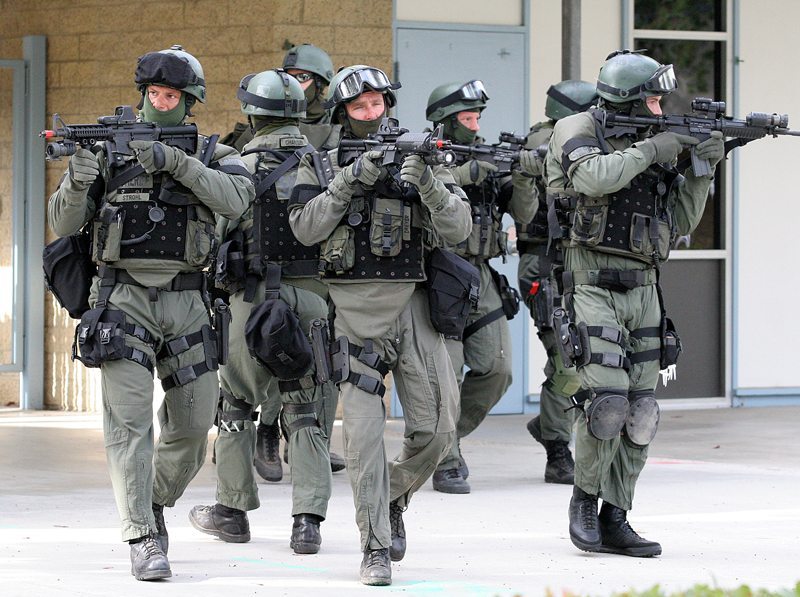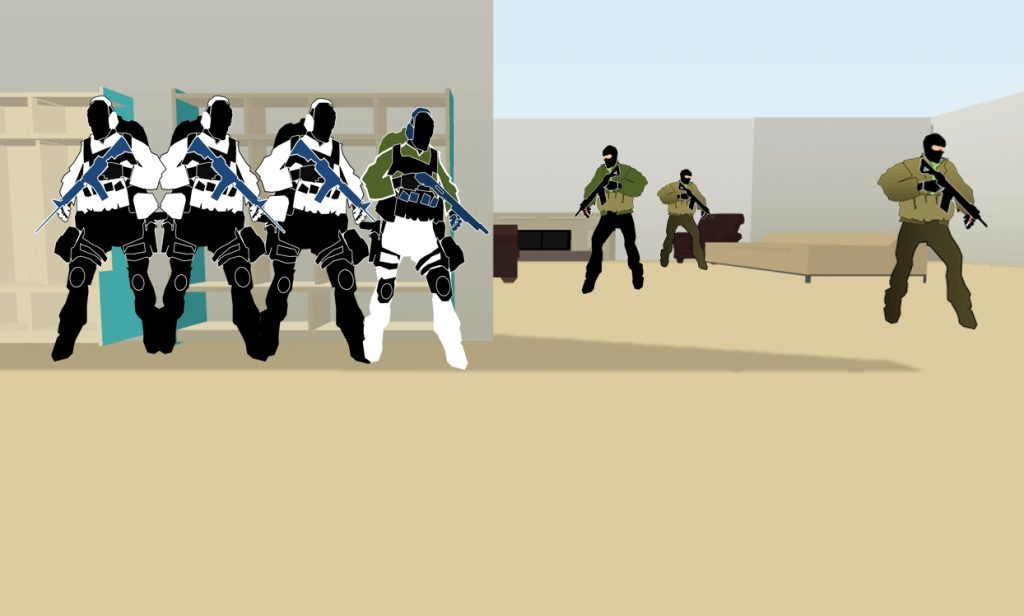Spotter Up will assume “no” responsibility for any use or misuse of information from this article. This article alone will not make the reader a TACTICS expert or can it be used as a substitute for PROFESSIONAL TACTICAL TRAINING. Spotter Up advises you to visit our site for training courses with a certified instructor On ALL weapon platforms.
TACTICS FOR THE UP AND COMING SWAT OFFICER
In this article we will give you the basic of all basics in Tactics. There is no “one way, or my way” to do tactics, its all based around Finding a Way and Making a Way. The basic components of an officer is Trust, Surprise, Speed.
TRUST
The first letter in T-eam, and one of the main factors in surviving an operation.
SURPRISE
This component of an assault is easily gained but can be lost just as fast. You should be ready before you get the squeeze-up, before the door breaches, before the flashbang goes off and definitely before you take your first step. The bad guy knows you’re coming but doesn’t when or how. Surprise is your best friend. When the surprise hits the bad guy you have a very brief time, less than seconds, to make your entry, take the room and engage your threat.
SPEED
You can only move as fast as you can see and accurately shoot. You can only shoot as fast as you train yourself to shoot. Sometimes speed can be good and bad. The good is that you will be on top of the bad before he knows it. The bad is you may leave your team and wander in alone. You may move so fast that you over-penetrate or miss something. You are only as fast as the slowest team mate.
VIOLENCE OF ACTION
This is the last given opportunity for the bad guy to give up and give in. Remember when you are called out for an operation it has already gotten bad and violence is expected. The number of guns you have is not the overall recipe for violence of action. You combine TRUST, SURPRISE and SPEED and you have the ability and tools you need to neutralize any threat. Your mind-frame at that time is 90% of complete domination. Mastering the room clearing methods is essential and has a collective connection between all components. Without these components you will not achieve violence of action of a successful mission.
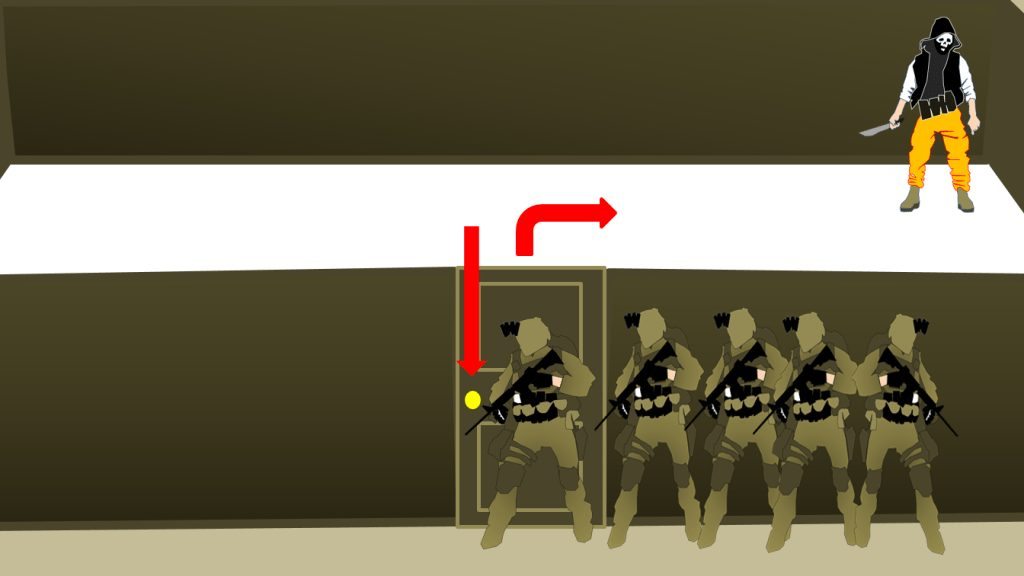
Predetermined entry vs 1st man is never wrong
Some officers often are trained in pre-gaming on which way each man will move post breach. What you want to do may not be what you will do. You don’t know what’s on the other side of the door that will allow you to flow in using your predetermined game plan. The simplest way to make an entry is feed off the first man. If he goes left, the second man goes right and so on. The first man has a better eye on the door and should have determined the path of least resistance or which way the door opens. Once you determine which method of entry, then come’s speed. When it’s time to move, MOVE to get out of the FATAL FUNNEL. The first officer, then the second, must get in the room as quickly as possible to avoid being bogged down at the entry point. This will allow for a smooth entry for the team. If you stop in the door, or threshold, you risk fighting the battle alone and possibly being seriously injured. The fatal funnel is not always in the door it can be in the middle of a hallway or some other entry point. When you stop moving or your team can’t help you, you have found yourself in a fatal funnel.
Reading the door
In most cases when you see hinges the door will open toward you. If you don’t see the hinges the door will open inward and away. The door knob will tell you the obvious of where the locking mechanisms are and in which direction the door will move. If the door opens toward you the 1st officer will move toward the knob side. If the door opens inward the 1st officer will move toward the hinge side. We can’t say it enough; “mindset is key” because these observations are made within seconds, and will make the difference in surprise and speed.
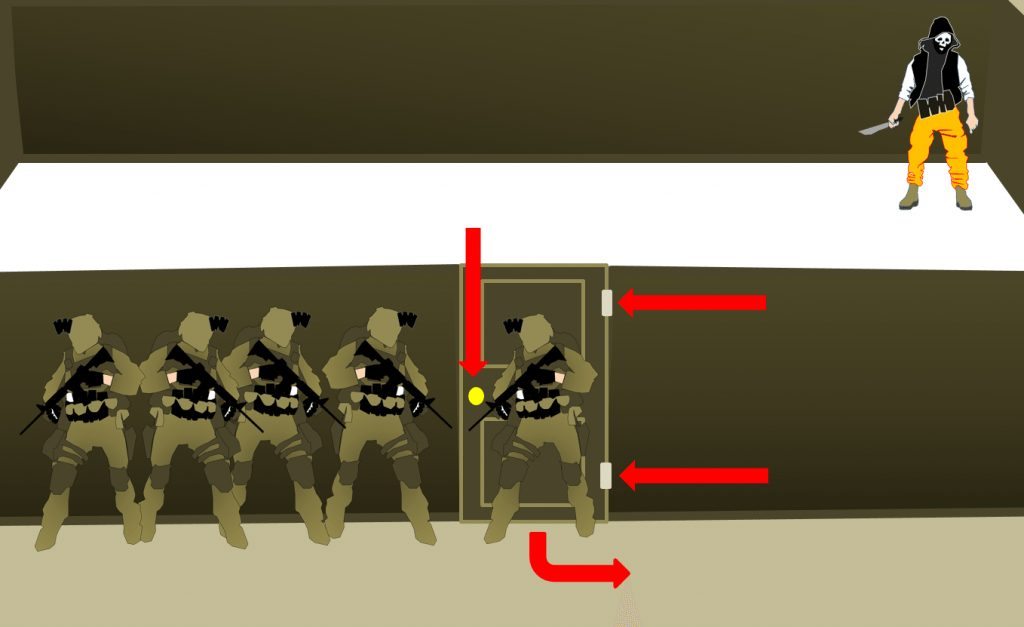
Immediate threat area
Each room has an area of responsibility for each officer. Once the door opens the first operator should decide which direction he will enter and which area/corner of the room is the immediate threat. The decision is based on how much of the room he has seen prior to entry and chosen to move to the majority of the room not cleared. Look for tables, closets, large chairs and cabinets that you cannot see around or thru, these also may be immediate threat areas.
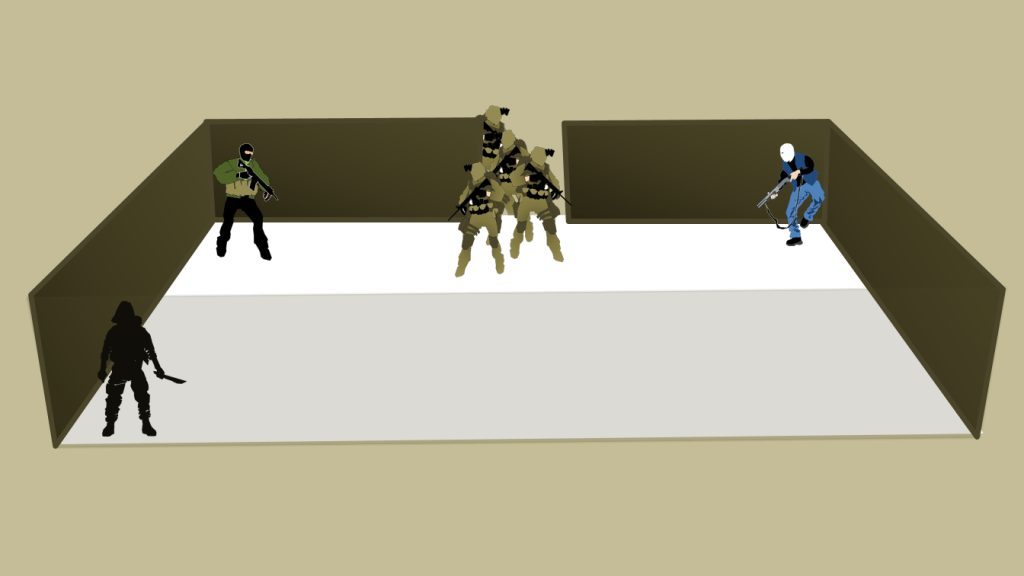
Remember you are only as perfect as your practice. Train for survival not for defeat. Always think: WHATS MY NEXT MOVE?
FIND A WAY OR MAKE A WAY

